A Study on Fatigue Crack Reinforcement of Bridge Deck and U-Rib Weld after Considering Residual Stress
Abstract
:1. Introduction
2. Analysis of Stress Characteristics in Welding Details of Deck-U-Ribs
2.1. Project Overview
2.2. Loading Conditions
3. Finite Element Analysis of Welding Residual Stress
3.1. Welding Finite Element Model
3.2. Welding Residual Stress Field Analysis Results
4. Stress Intensity Factor of Weld Crack
4.1. CFRP Reinforcement Model
4.2. Stress Intensity Factor Analysis
4.2.1. Stress Intensity Factor under Vehicle Only
4.2.2. Stress Intensity Factor after Considering Residual Stress
4.2.3. Stress Intensity Factor after Reinforcement
5. Crack Growth
5.1. Crack Growth after Considering Residual Stress
5.2. Crack Growth after CFRP Reinforcement
6. Conclusions
- (1)
- The amplitude of the stress intensity factor of the crack at the weld toe and weld root is less than the threshold value of the stress intensity factor when the vehicle only acts, and the crack will not expand. The initial crack at the welding connection between the deck and the U-rib under the combined load of the vehicle only, considering residual stress, and CFRP reinforcement is a composite crack dominated by Type I. Compared with vehicle only, considering residual stress, the maximum KI value of cracks at the weld toe increased by 6.9 times, and the maximum KI value of cracks at the weld root increased by 10.7 times.
- (2)
- The reinforcement method of pasting CFRP on the lower side has a reinforcement effect on cracks at the weld toe but no reinforcement effect on cracks at the weld root. The reinforcement effect of weld toe cracks increases with the increase of the number, length, and width of CFRP layers but decreases after exceeding a certain value. Compared with the unreinforced condition, after CFRP reinforcement, the KI at the initial crack tips A and B at the weld toe decreased by 35 MPa·mm1/2, and the KI at the deepest crack point C decreased by 33 MPa·mm1/2.
- (3)
- When the crack at the weld toe was extended, it was found that after reinforcement, when the crack at the weld toe extended to half of the plate thickness by 7 mm, the KI at crack tips A and B decreased by 98 MPa·mm1/2 compared to unreinforced ones, and the KI at the deepest crack C decreased by 52 MPa·mm1/2. The number of load cycles increased by 43%, and the extension of the crack length decreased by 26%.
Author Contributions
Funding
Institutional Review Board Statement
Informed Consent Statement
Data Availability Statement
Conflicts of Interest
References
- Zhang, Q.H.; Bu, Y.Z.; Li, Q. Review on fatigue problems of orthotropic steel bridge deck. China J. Highw. Transp. 2017, 30, 14–39. [Google Scholar]
- Zhang, Q.H.; Cui, C.; Bu, Y.Z.; Li, Q.; Xia, S. State-of-the-art review of fatigue of steel bridge in 2019. J. Civ. Environ. Eng. 2020, 42, 147–158. [Google Scholar]
- Cui, C.; Bu, Y.Z.; Li, J.; Zhang, Q.H. Distribution characteristics of welding residual stress at U deck-to-rib connection detail of steel box girder. J. Southwest Jiaotong Univ. 2018, 53, 260–265. [Google Scholar]
- van den Berg, N.; Xin, H.; Veljkovic, M. Effects of residual stresses on fatigue crack propagation of an orthotropic steel bridge deck. Mater. Des. 2021, 198, 109294. [Google Scholar] [CrossRef]
- Kainuma, S.; Yang, M.; Jeong, Y.-S.; Inokuchi, S.; Kawabata, A.; Uchida, D. Fatigue behavior investigation and stress analysis for rib-to-deck welded joints in orthotropic steel decks. Int. J. Steel Struct. 2018, 18, 512–527. [Google Scholar] [CrossRef]
- Cheng, B.; Ye, X.H.; Cao, X.E.; Dave, M.D.; Cao, Y.S. Experimental study on fatigue failure of rib-to-deck welded connections in orthotropic steel bridge decks. Int. J. Fatigue 2017, 103, 157–167. [Google Scholar] [CrossRef]
- Fisher, J.; Barsom, J. Evaluation of cracking in the rib-to-deck welds of the Bronx–Whitestone Bridge. J. Bridge Eng. 2016, 21, 04015065. [Google Scholar] [CrossRef]
- Liu, Y.M.; Zhang, Q.H.; Cui, C.; Bu, Y.Z. Numerical simulation method for 3D fatigue crack propagation of orthotropic steel bridge deck. China J. Highw. Transp. 2016, 29, 89–95. [Google Scholar]
- Wang, C.S.; Zhai, M.S.; Tang, Y.M.; Chen, W.Z.; Qu, T.Y. Numerical fracture mechanical simulation of fatigue crack coupled propagation mechanism for steel bridge deck. China J. Highw. Transp. 2017, 30, 82–95. [Google Scholar]
- Chen, T.; Xia, Z.C.; Li, L.Z.; Zhang, N.X. Research on the fatigue life of steel plates with inclined cracks repaired with single-sided CFRP. J. Steel Constr. 2018, 35, 238–245. [Google Scholar]
- Yashar, D.; Dilum, F.; Ardalan, H.; Elyas, G. Behavior of cracked steel plates strengthened with adhesively bonded CFRP laminates under fatigue Loading: Experimental and analytical study. J. Compos. Struct. 2021, 266, 113816. [Google Scholar]
- Kamruzzaman, M.; Jumaat, M.Z.; Ramli, S.N.H.; Saiful, I. A Review on Strengthening Steel Beams Using FRP under Fatigue. Sci. World J. 2014, 2014, 702537. [Google Scholar] [CrossRef] [PubMed]
- Yu, Q.; Chen, T.; Gu, X. State-of-the-art on Fatigue Behavior of Steel Structures Strengthened with Carbon Fiber Reinforced Polymer Materials. J. Struct. Eng. 2011, 27, 127–132. [Google Scholar]
- Kamruzzaman, M.; Jumaat, M.Z.; Sulong, N.H.R.; Narmashiri, K.; Ghaedi, K.; Hosen, A. Experimental investigation on fatigue behavior of wide-flange steel I-beams strengthened using different CFRP end cutting shapes. Int. J. Steel Struct. 2019, 19, 760–768. [Google Scholar] [CrossRef]
- Chataigner, S.; Whabeh, M.; Garcia, S.D.; Benzarti, K.; Birtel, V.; Fischer, M.; Sopena, L.; Boundouki, R.; Lehmann, F.; Martin, E. Fatigue strengthening of steel bridges with adhesively bonded CFRP laminates: Case study. J. Compos. Constr. 2020, 24, 05020002. [Google Scholar] [CrossRef]
- Zhang, N.; Yue, Q.R.; Yang, Y.X.; Hu, L.Q.; Peng, F.M. Research on the fatigue tests of steel structure member reinforced with CFRP. J. Ind. Constr. 2004, 34, 19–21. [Google Scholar]
- Li, C.X.; Ke, L.; Chen, Z.Y.; He, J.; Guo, L.C.; Jiao, Y. Fatigue behavior and CFRP reinforcement of diaphragm cutouts in orthotropic steel bridge decks. China J. Highw. Transp. 2021, 34, 63–75. [Google Scholar]
- Song, Y.; Ding, Y.; Jiang, F.; Wang, Z.; Jia, H.J.; Chen, Z.Y.; Xu, C.; Ge, J.W. Fatigue Performance of CFRP-Strengthened Rib-to-Diaphragm Welded Details of Orthotropic Steel Decks: Experimental and Numerical Evaluation. Adv. Civ. Eng. 2022, 2022, 4730015. [Google Scholar] [CrossRef]
- Zhang, Y.H.; Guo, B.S.; Zhang, W.G.; Chen, F.H. Fatigue crack stress intensity factor of double-sided welded rib-to-deck joints in steel bridge deck. J. Civ. Environ. Eng. 2022, 44, 62–70. [Google Scholar]
- Zhao, Y.; Qin, Y.Y.; Li, Y.X. Study on FRANC3D for Fracture Expansion. West. J. Transp. Technol. 2011, 9, 69–72. [Google Scholar]
- Guo, S.L.; Lei, J.Q.; Huang, Z.W. Study on initial crack characteristics of inside weld in both-side welded U-rib. J. Cent. South Univ. (Sci. Technol.) 2021, 52, 3581–3594. [Google Scholar]
- Gadsden, S.A.; Al-Shabi, M.; Arasaratnam, I.; Habibi, S.R. Combined cubature kalman and smooth variable structure filtering: A robust nonlinear estimation strategy. Signal Process. 2014, 96, 290–299. [Google Scholar] [CrossRef]
- JTG/T D65-06-2015; Specifications for Design of Highway Concrete-Filled Steel Tubular Arch Bridges. Industry Standard of the People’s Republic of China: Beijing, China, 2015.
- Shigenobu, K.; Young-Soo, J.; Muye, Y.; Susumu, I. Welding residual stress in roots between deck plate and U-rib in orthotropic steel decks. J. Meas. 2016, 92, 475–482. [Google Scholar]
- Van, P.E.; Nagy, W.; Schotte, K.; Abdin, Z.; Hans, D.B. Determination of Residual Welding Stresses in a Steel Bridge Component by Finite Element Modeling of the Incremental Hole-Drilling Method. Appl. Sci. 2019, 9, 536. [Google Scholar]
- Masubuchi, K. Analysis of Welded Structures: Residual Stresses, Distortion, and Their Consequences; Elsevier: Amsterdam, The Netherlands, 2013; Volume 33. [Google Scholar]
- Cui, C.; Bu, Y.; Bao, Y.; Zhang, Q.; Ye, Z. Strain energy-based fatigue life evaluation of deck-to-rib welded joints in OSD considering combined effects of stochastic traffic load and welded residual stress. J. Bridge Eng. 2018, 23, 04017127. [Google Scholar] [CrossRef]
- Jiang, F.; Fu, Z.Q.; Ji, B.H.; Wan, L. Fatigue life evaluation of deck to U-rib welds in orthotropic steel deck integrating weldment size effects on welding residual stress. Eng. Fail. Anal. 2021, 124, 105359. [Google Scholar] [CrossRef]
- Zhao, Q.; Wu, C. Numerical analysis of welding residual stress of U-rib stiffened plate. J. Eng. Mech. 2012, 29, 262–268. [Google Scholar]
- Gu, Y. Research on Welding Residual Stresses and Distortions in Steel Bridge Decks Stiffened with U-Shaped Ribs. Ph.D. Thesis, Southwest Jiaotong University, Chengdu, China, 2016. [Google Scholar]
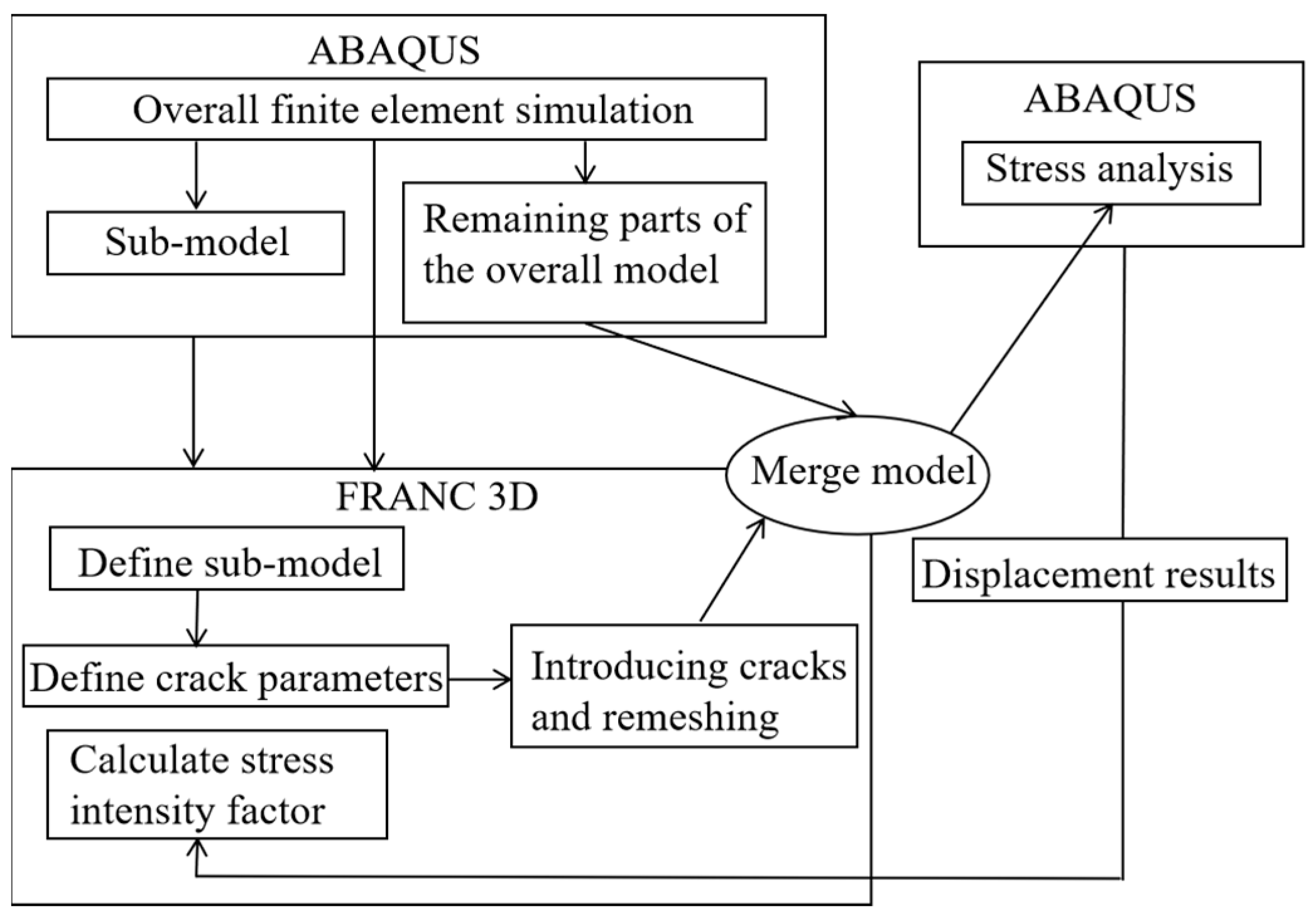

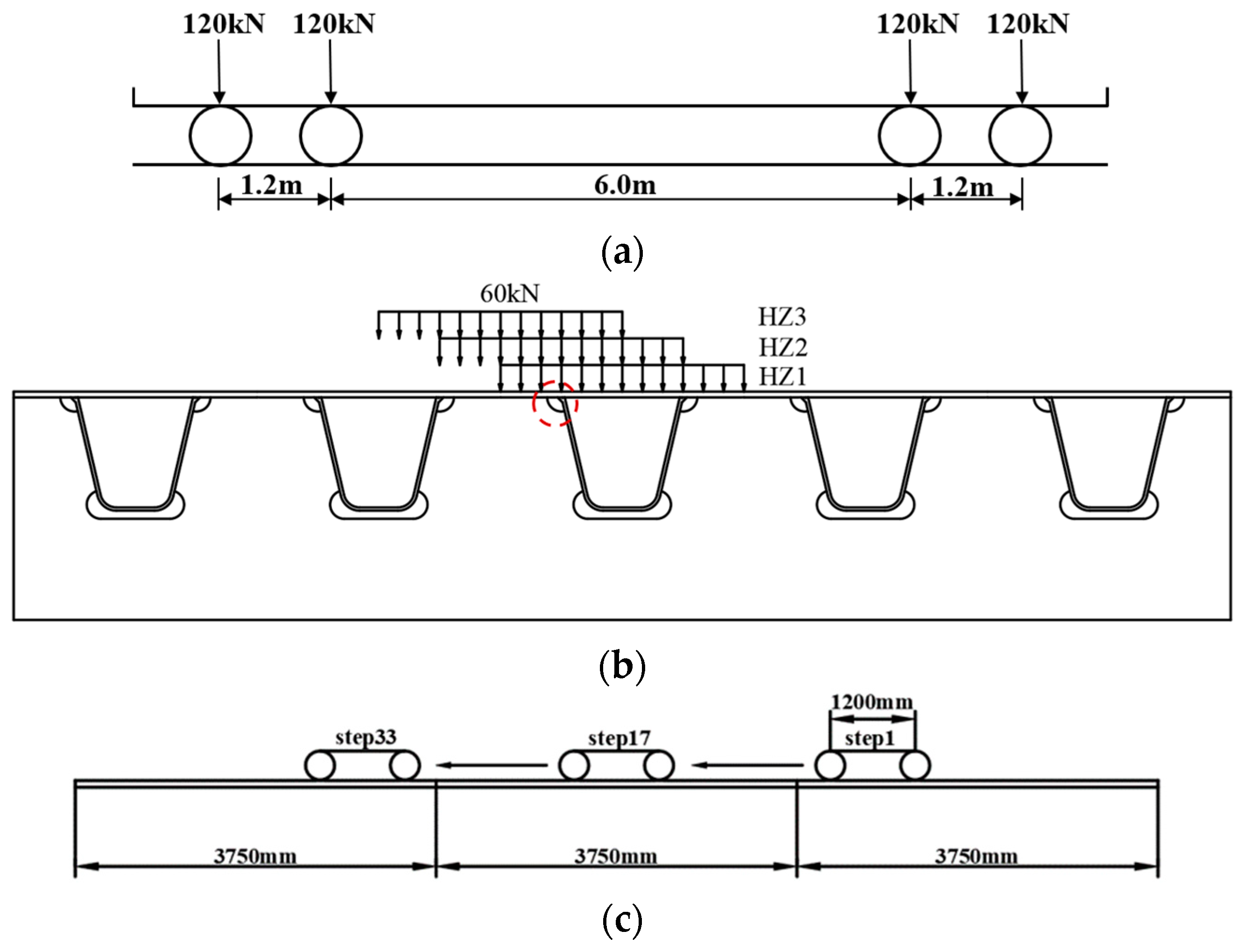
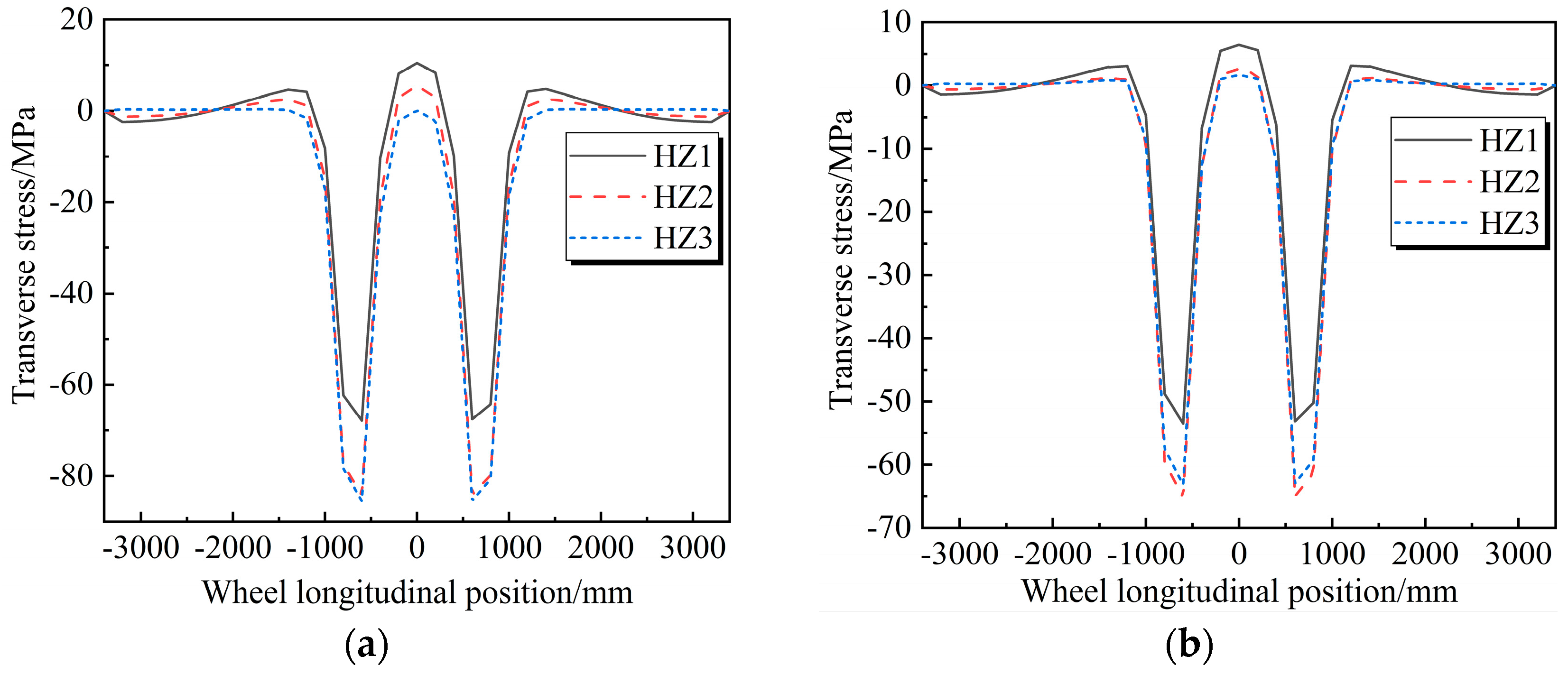
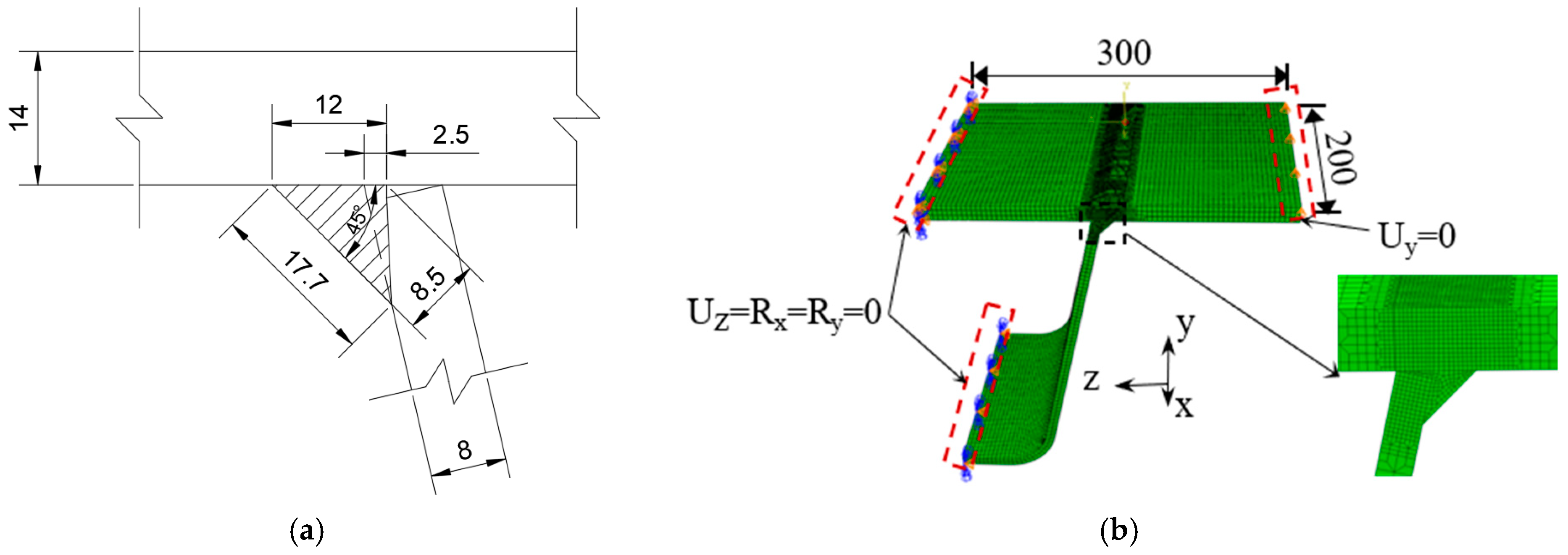
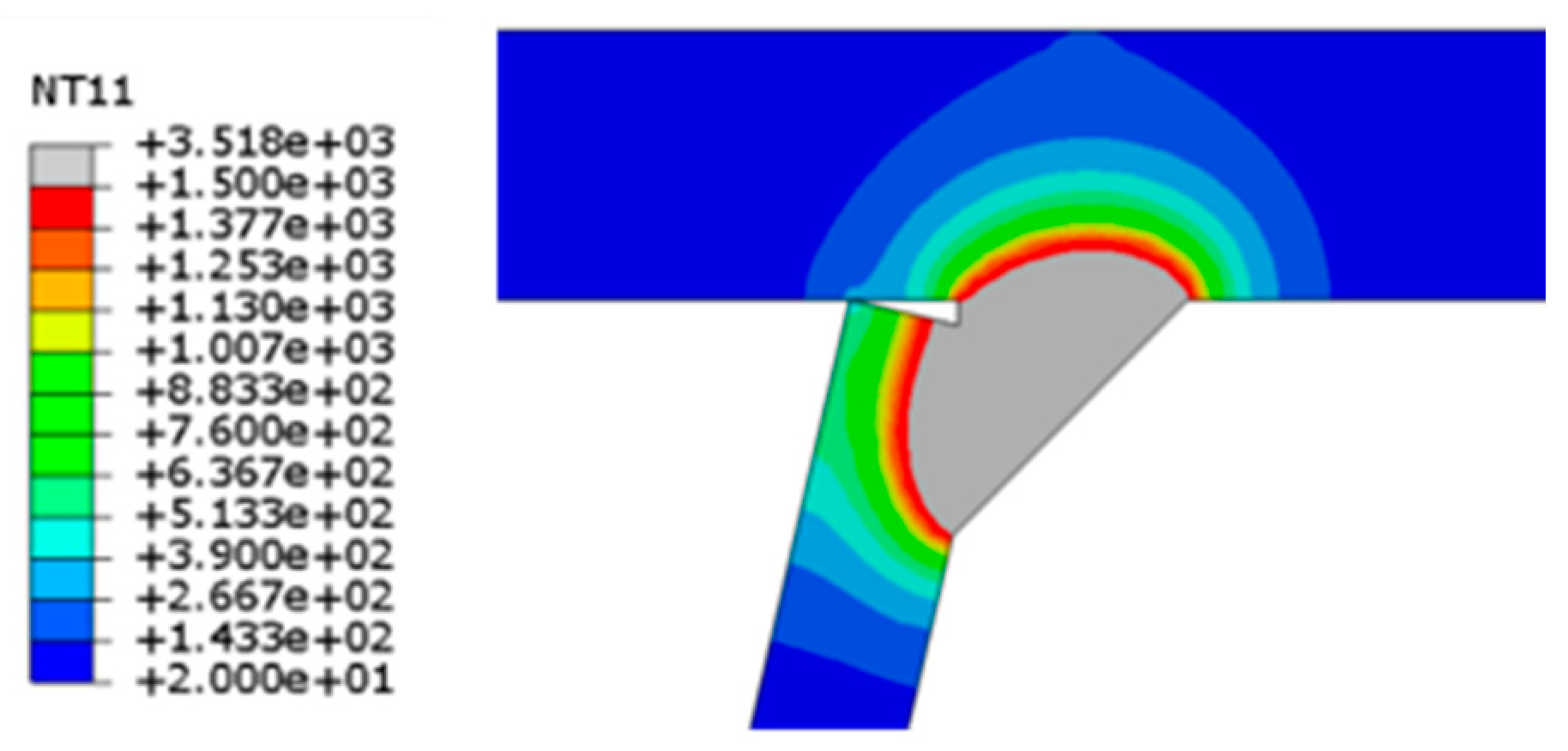
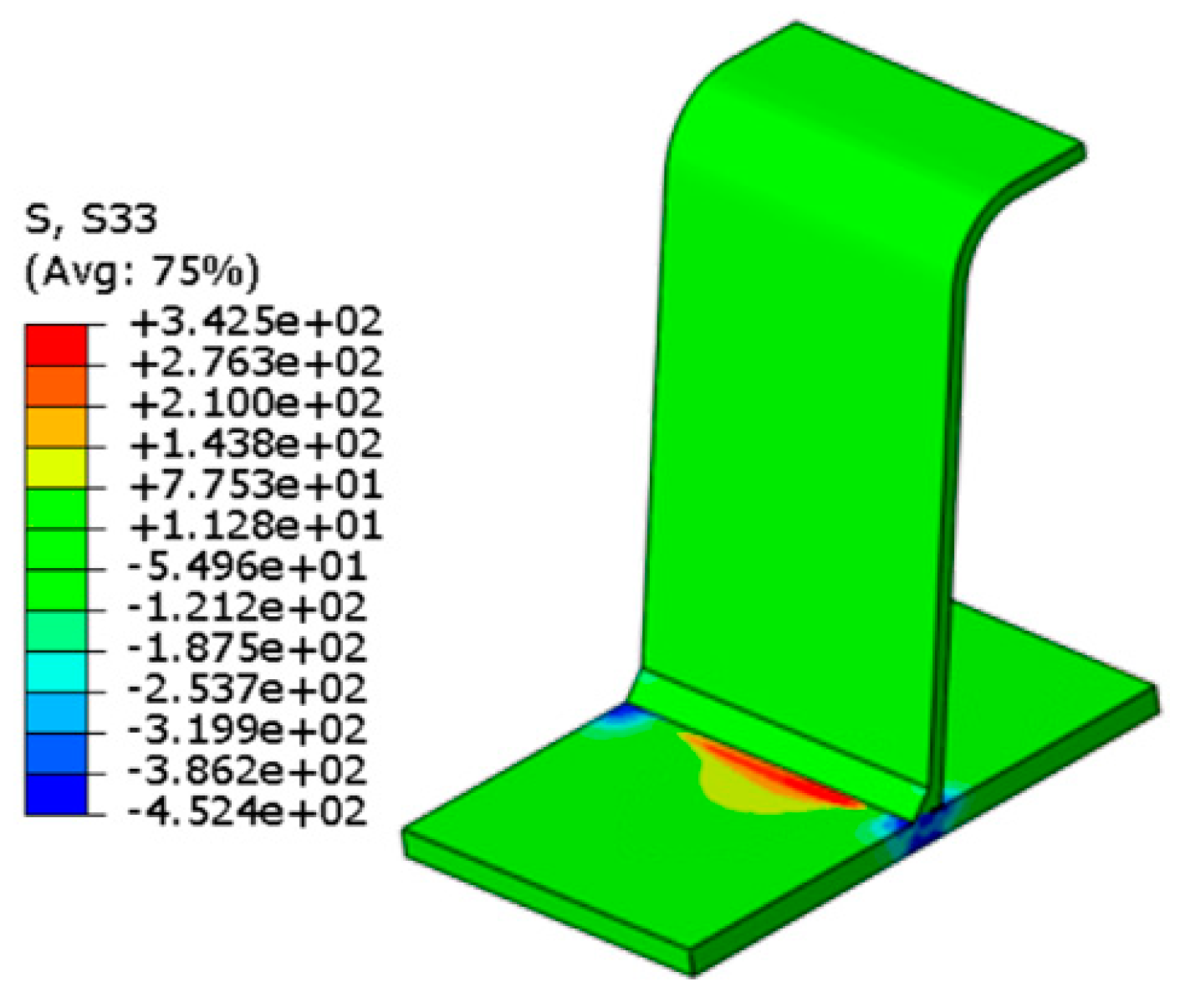
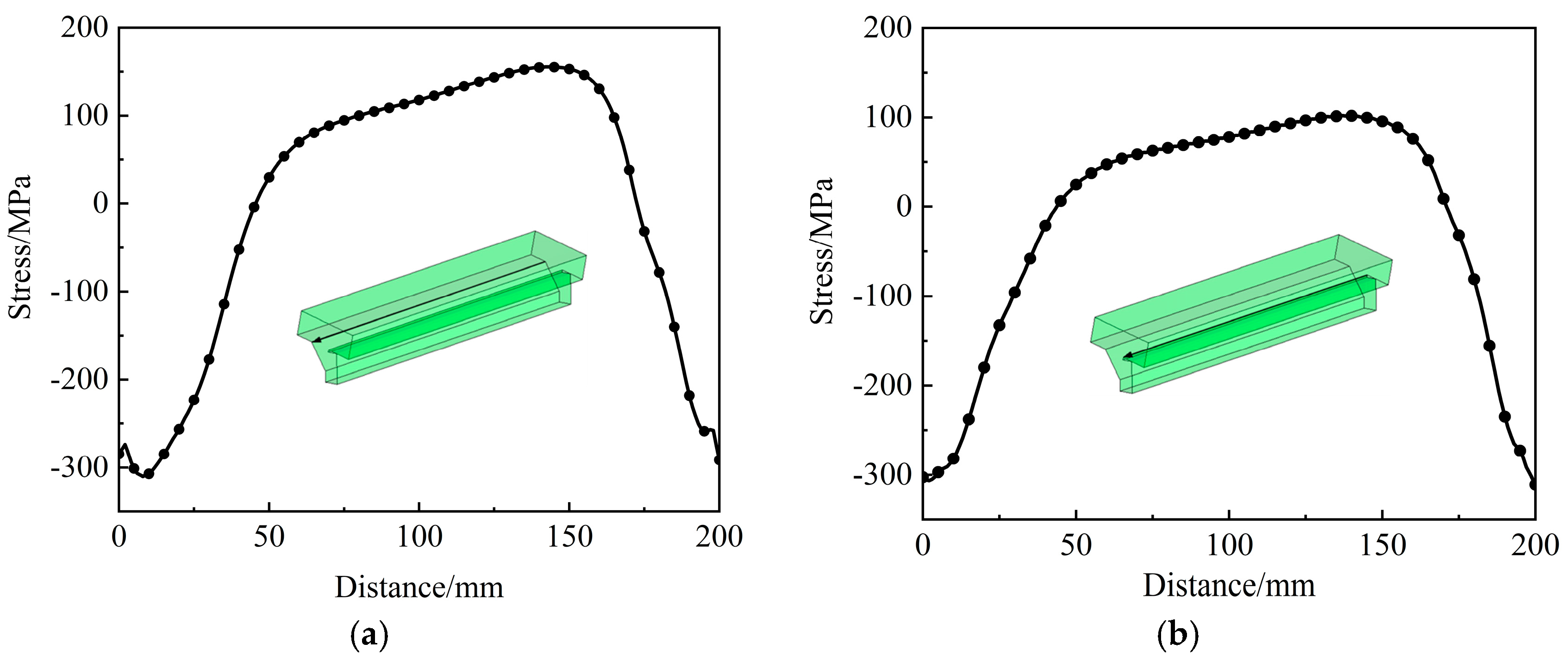
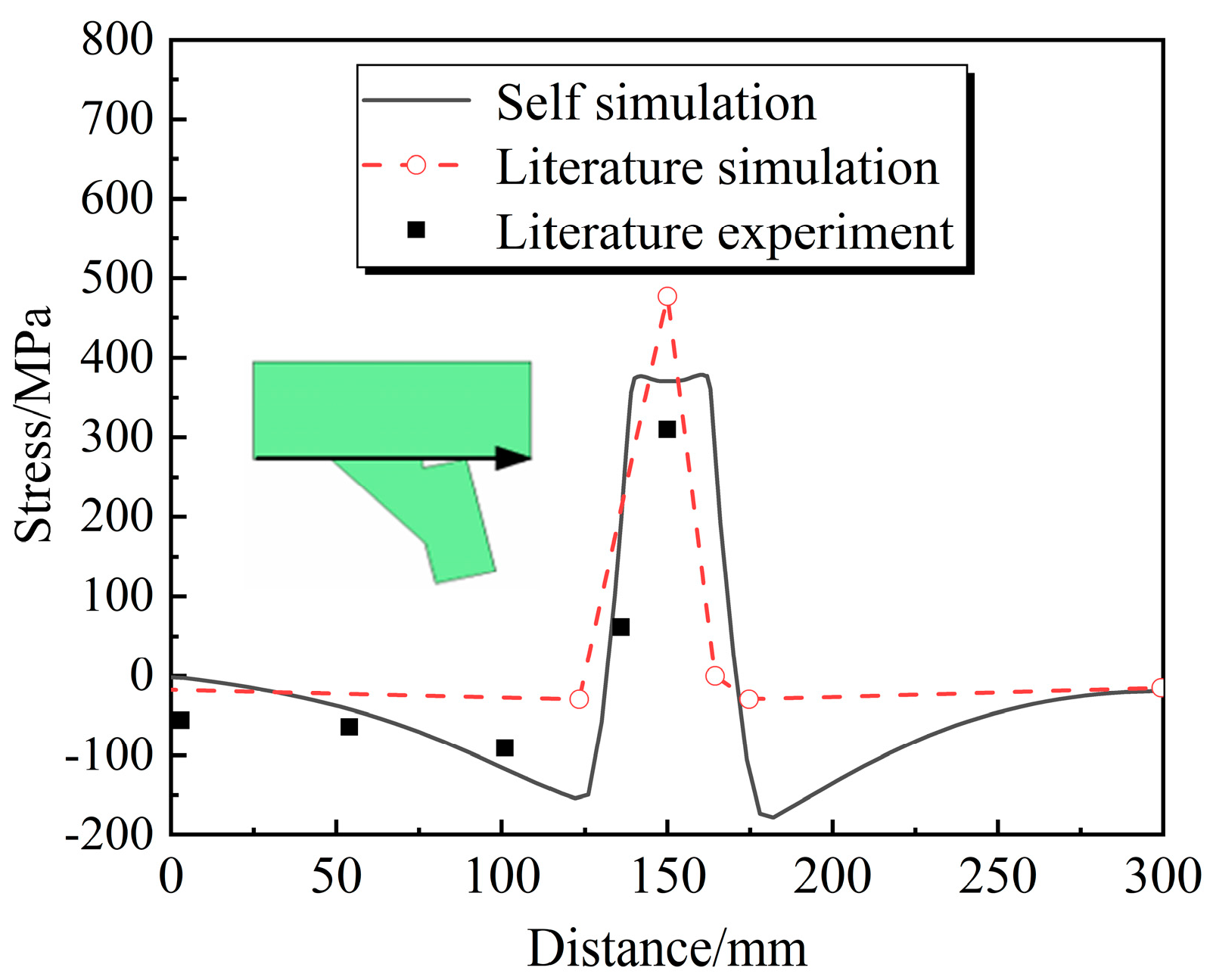
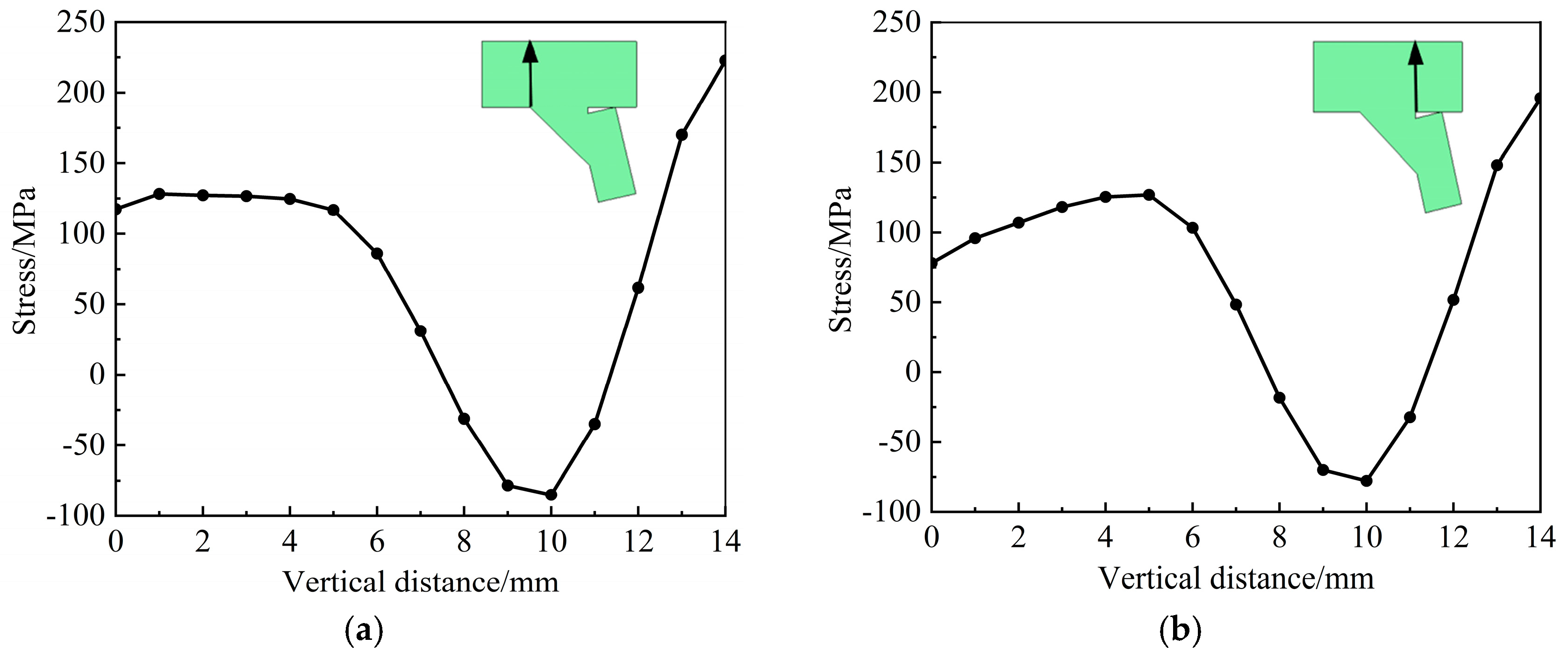
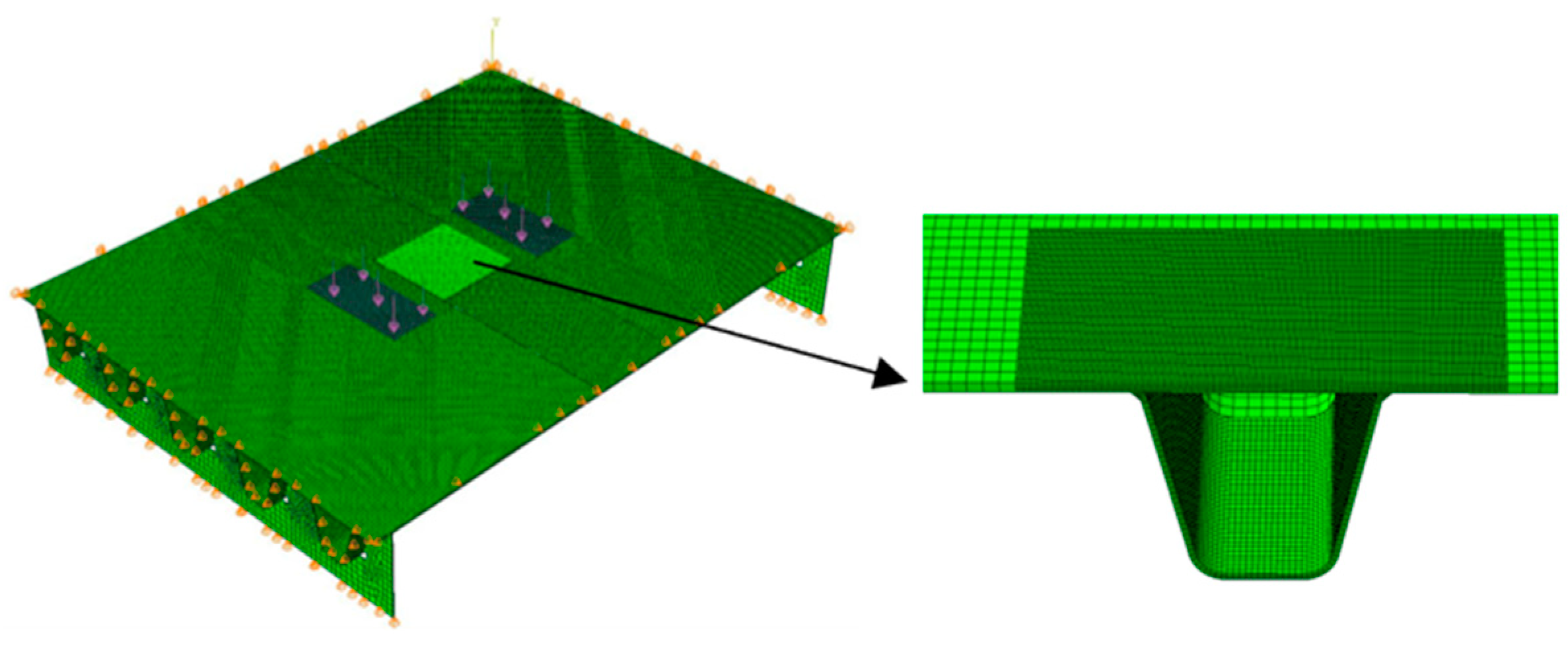





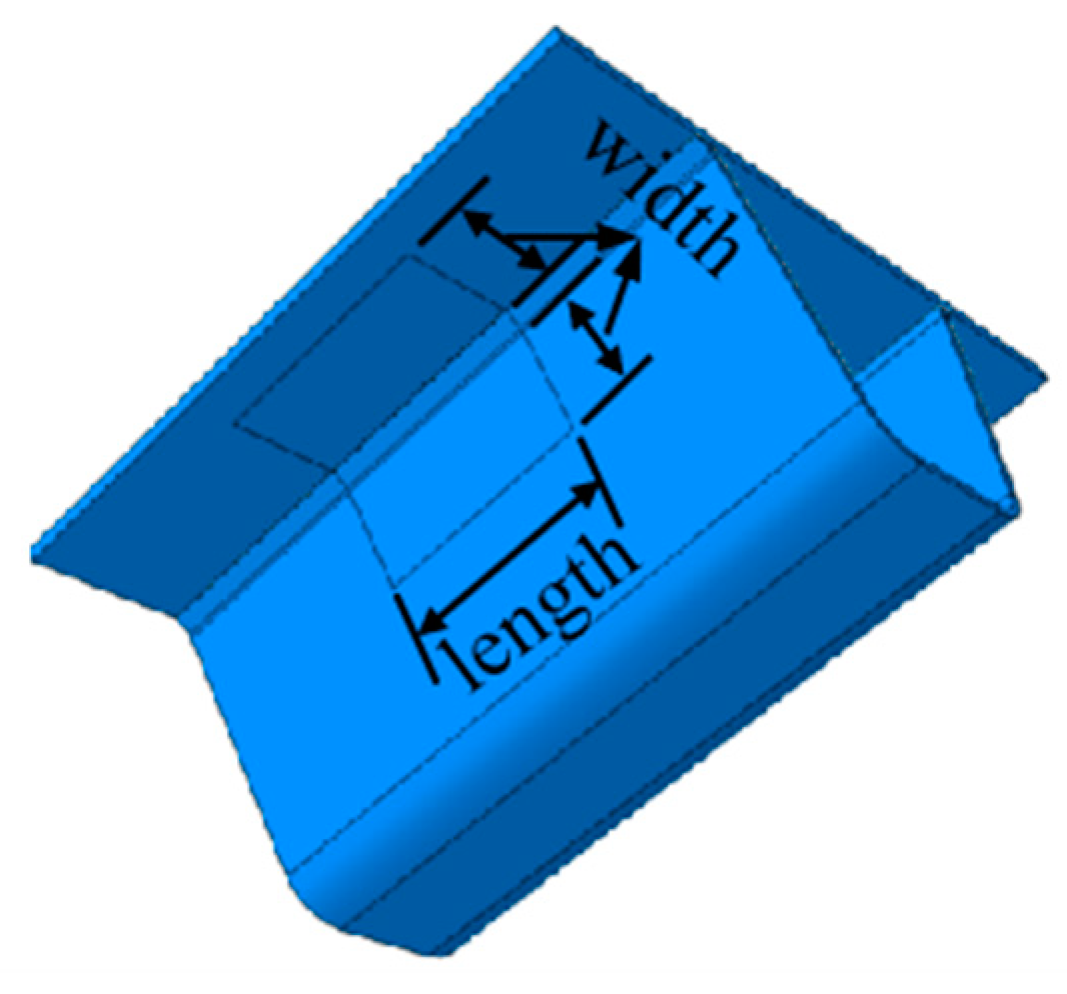

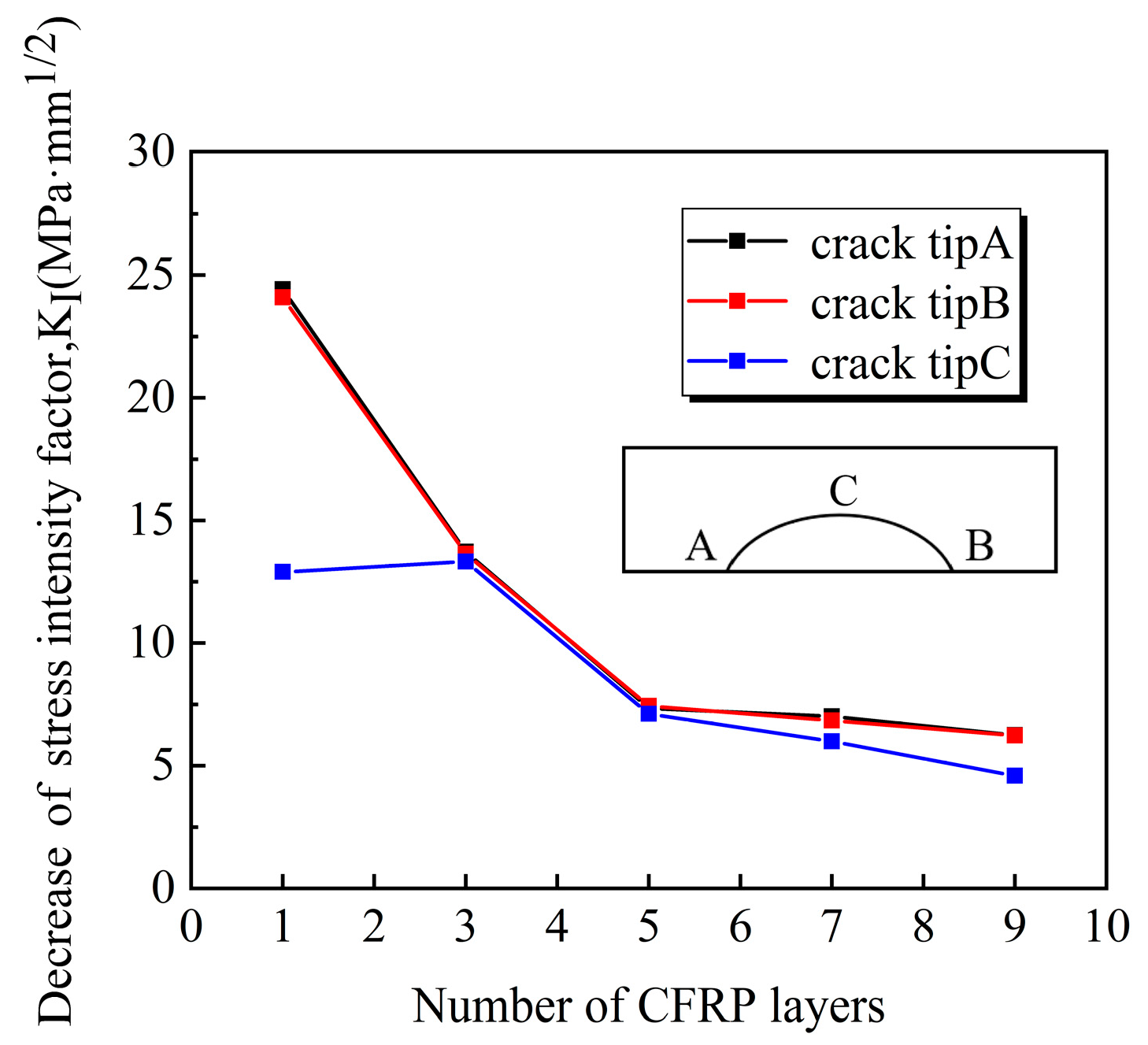
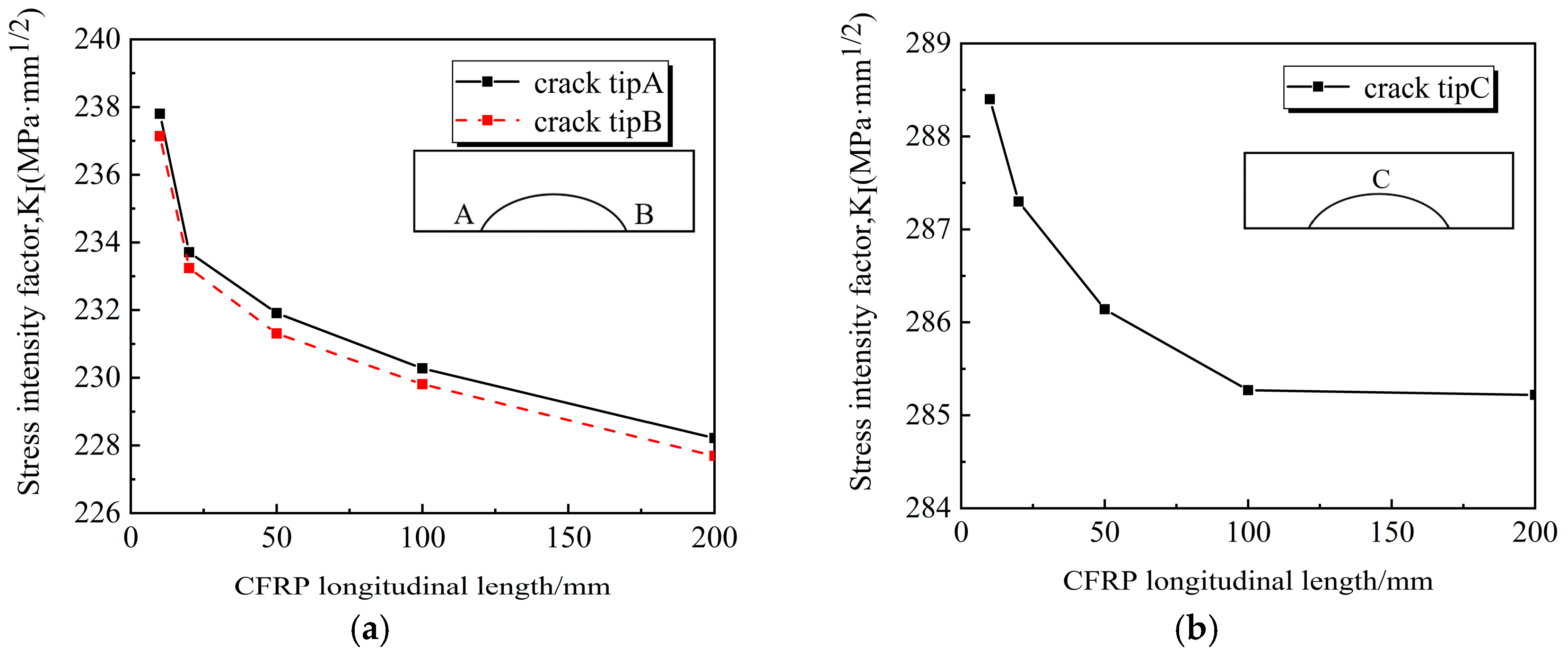

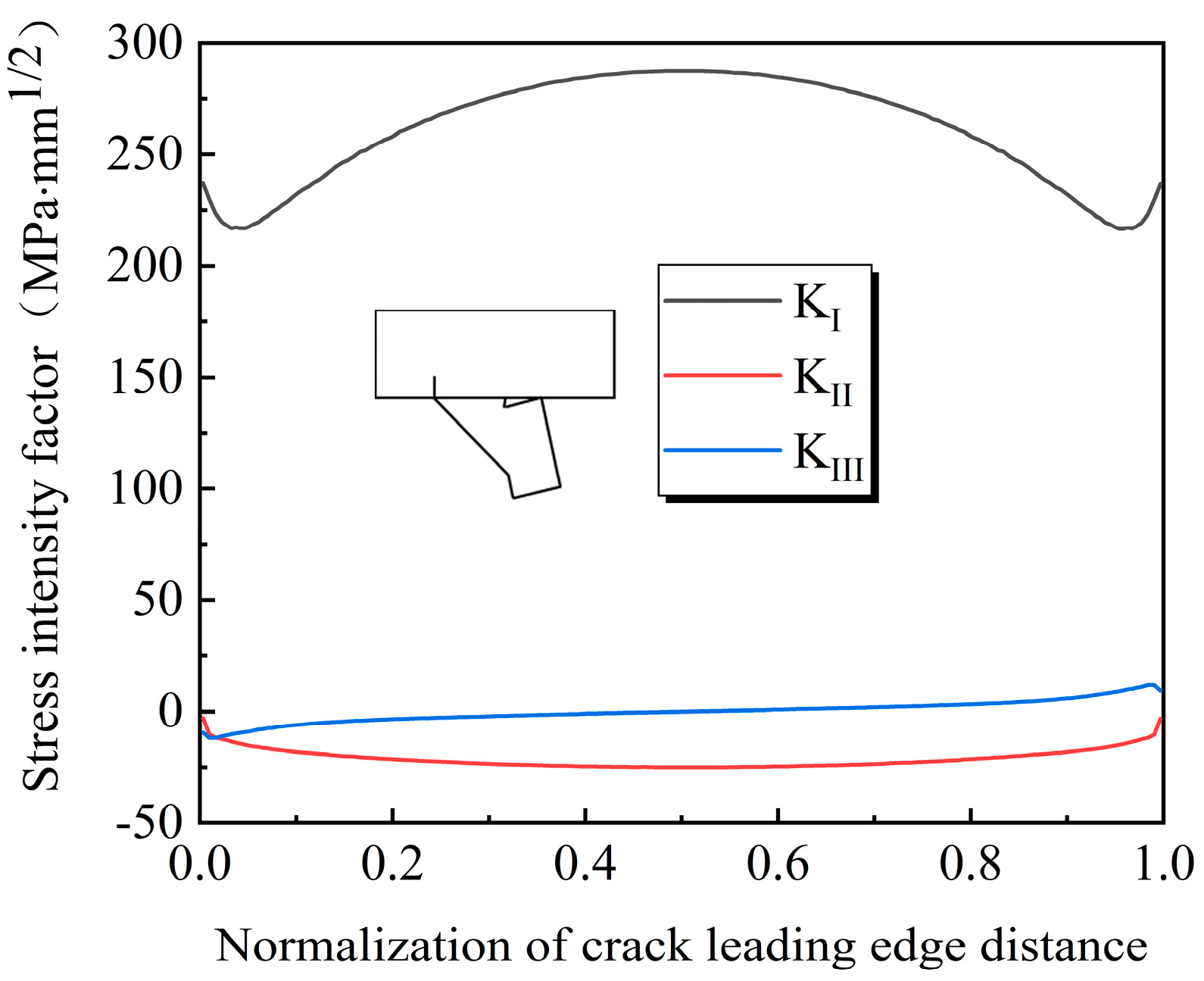
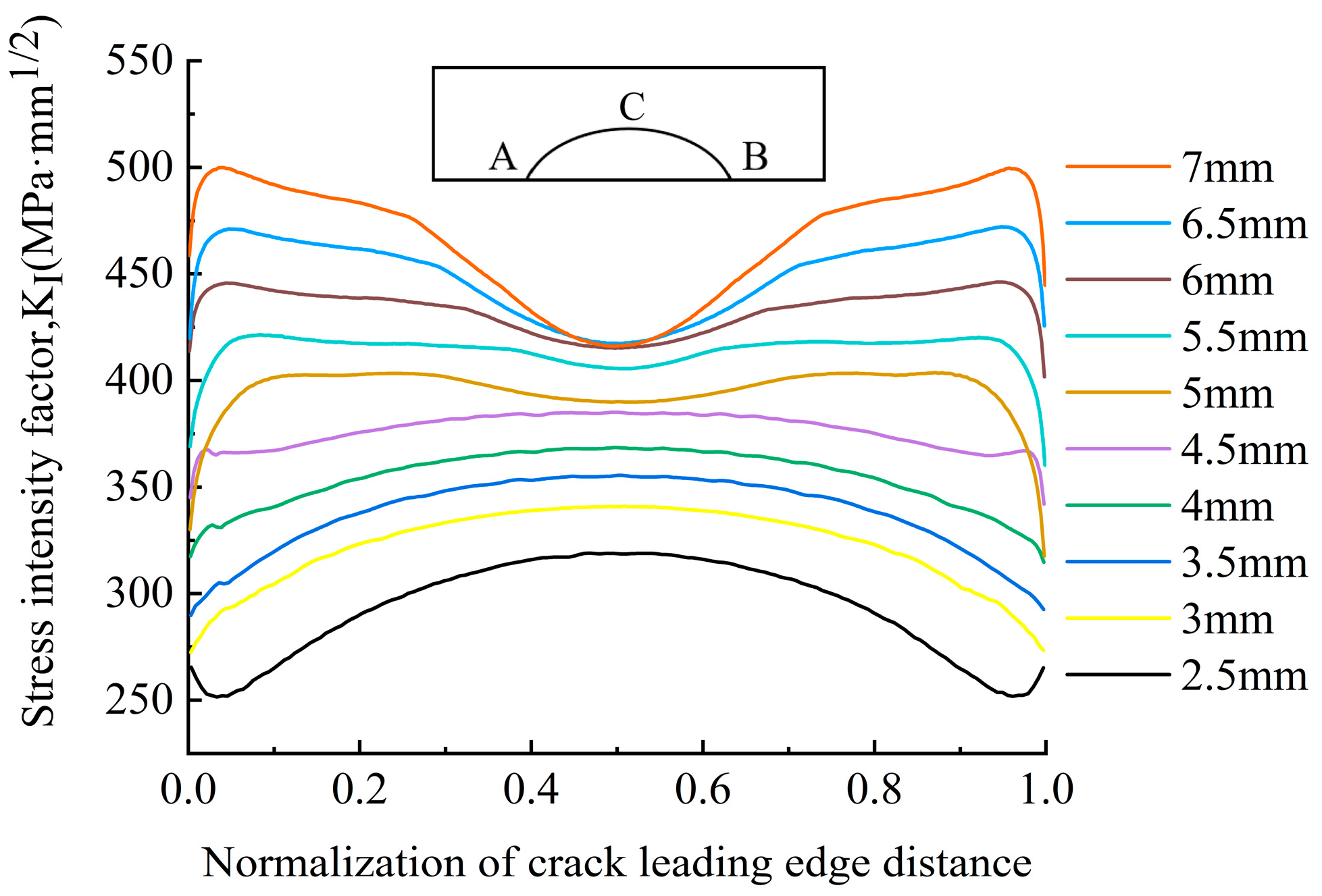
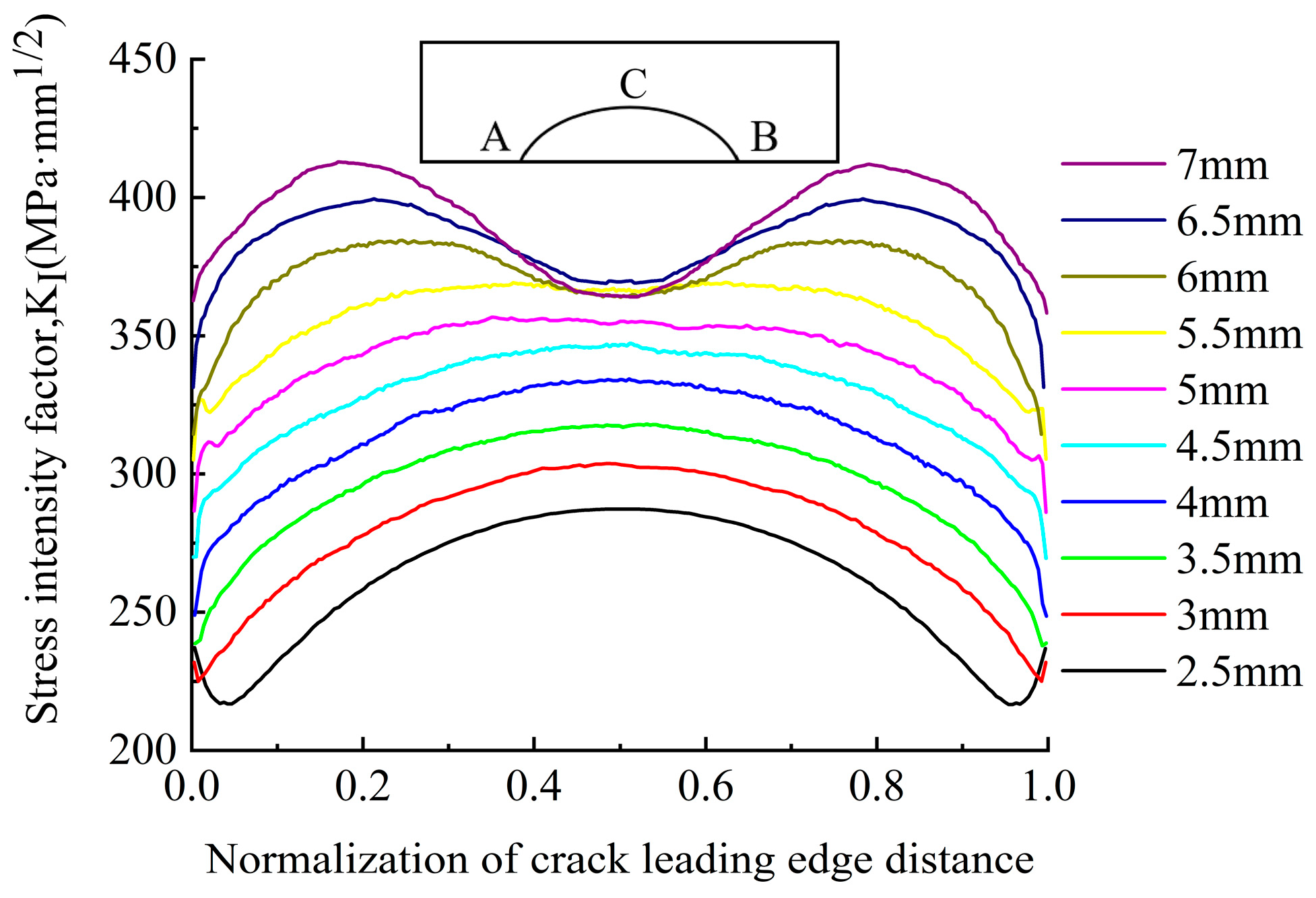


| CFRP | Ex MPa | Ey MPa | Ez MPa | Gxy MPa | Gyz MPa | Gzx MPa | vxy | vyz | vzx |
| 235,000 | 10,000 | 10,000 | 5000 | 2500 | 5000 | 0.28 | 0.28 | 0.35 |
Disclaimer/Publisher’s Note: The statements, opinions and data contained in all publications are solely those of the individual author(s) and contributor(s) and not of MDPI and/or the editor(s). MDPI and/or the editor(s) disclaim responsibility for any injury to people or property resulting from any ideas, methods, instructions or products referred to in the content. |
© 2023 by the authors. Licensee MDPI, Basel, Switzerland. This article is an open access article distributed under the terms and conditions of the Creative Commons Attribution (CC BY) license (https://creativecommons.org/licenses/by/4.0/).
Share and Cite
Hao, Y.; Ming, L. A Study on Fatigue Crack Reinforcement of Bridge Deck and U-Rib Weld after Considering Residual Stress. Appl. Sci. 2023, 13, 10185. https://doi.org/10.3390/app131810185
Hao Y, Ming L. A Study on Fatigue Crack Reinforcement of Bridge Deck and U-Rib Weld after Considering Residual Stress. Applied Sciences. 2023; 13(18):10185. https://doi.org/10.3390/app131810185
Chicago/Turabian StyleHao, Yu, and Li Ming. 2023. "A Study on Fatigue Crack Reinforcement of Bridge Deck and U-Rib Weld after Considering Residual Stress" Applied Sciences 13, no. 18: 10185. https://doi.org/10.3390/app131810185





